Registration Process Redesign
A UX DESIGN CASE STUDY
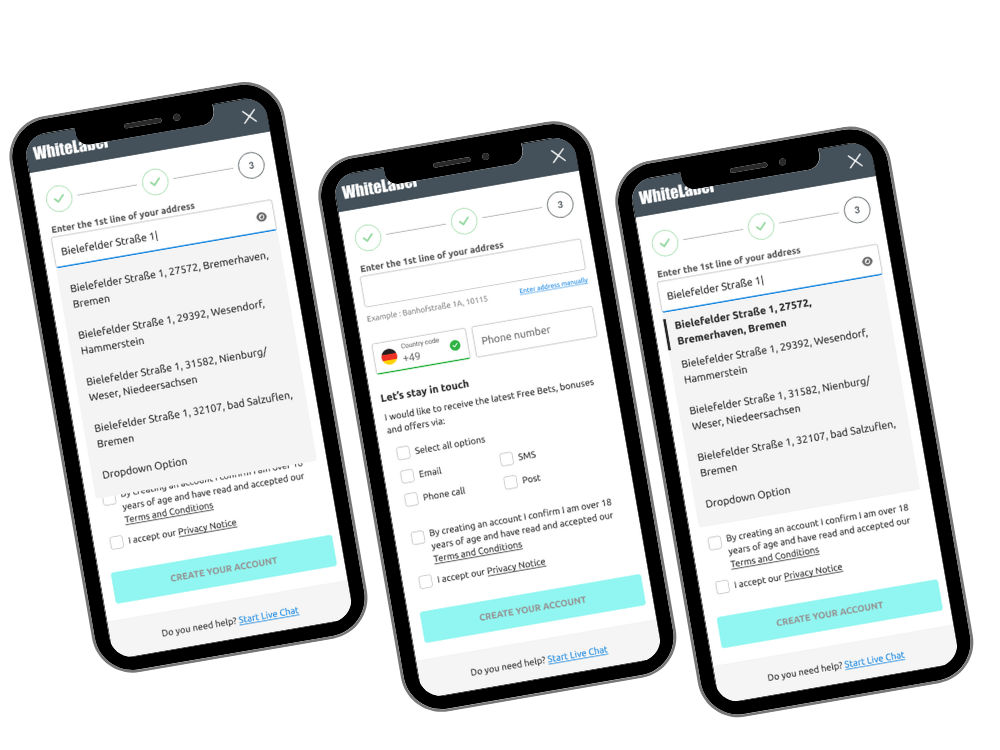
A UX DESIGN CASE STUDY

Lead UX Designer
Entain ( Ladbrokes, Coral , Betboo, Bwin etc )
6 Months
The current address manual entry system had an abandonment rate of approximately 27% of users, who fail to complete registration upon reaching the third step. Additionally, the current system’s three-step process leads users to mistakenly start entering their phone number instead of their address.�
Project goals:
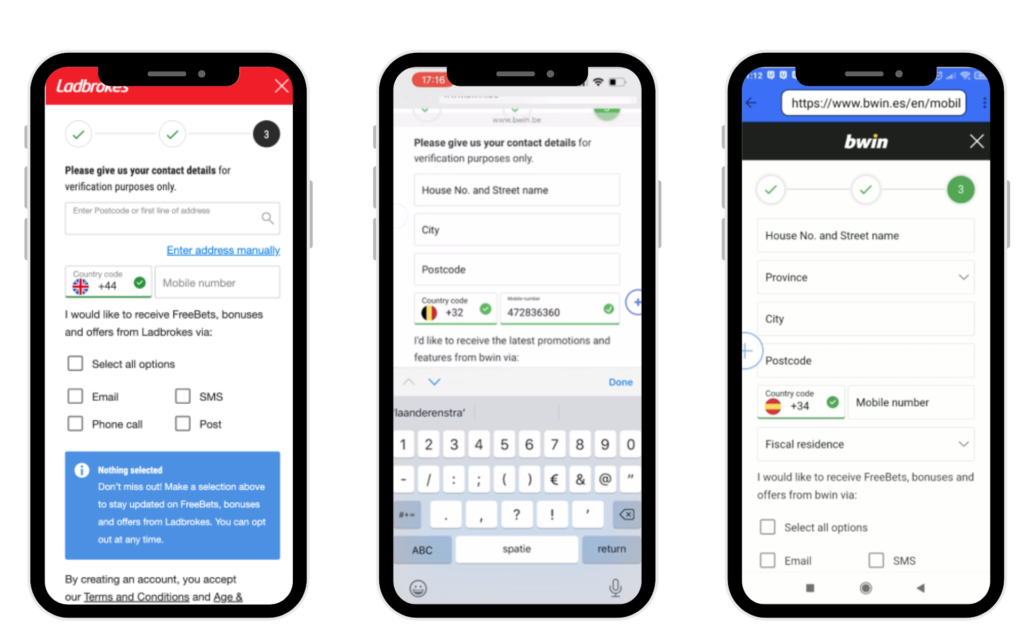
I reviewed several platforms, including Paddy Power, Bet365, William Hill, and Amazon, to analyze how they handled the address entry process. The focus was on their use of auto-complete, error messages, and region-specific fields to minimize user errors and improve the registration experience.
Findings:
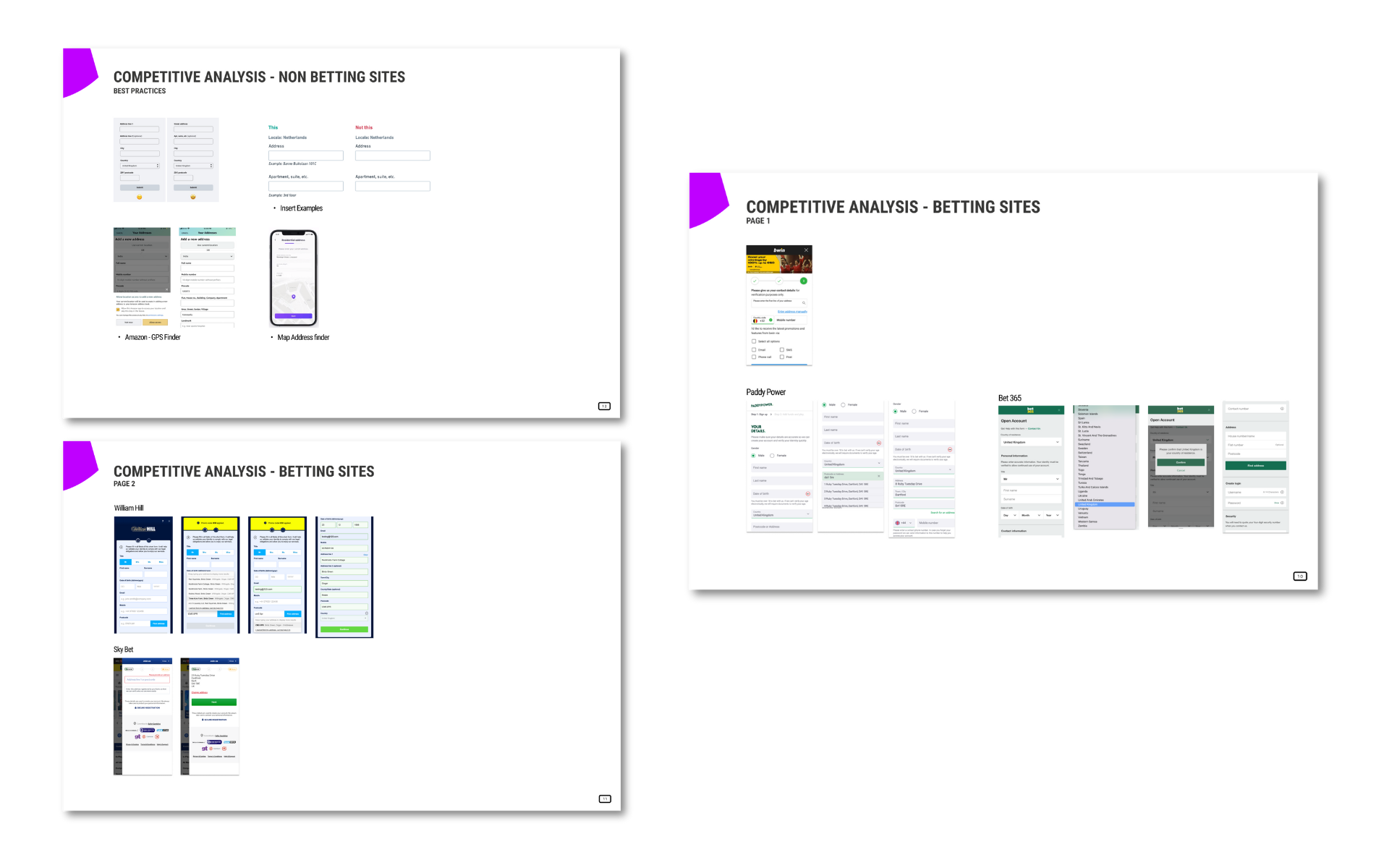
I conducted an industry best practise review, and the results highlights the importance of region-specific address formats and the use of auto-complete functionality to reduce input time and errors.
Recommendations based on my research includes:
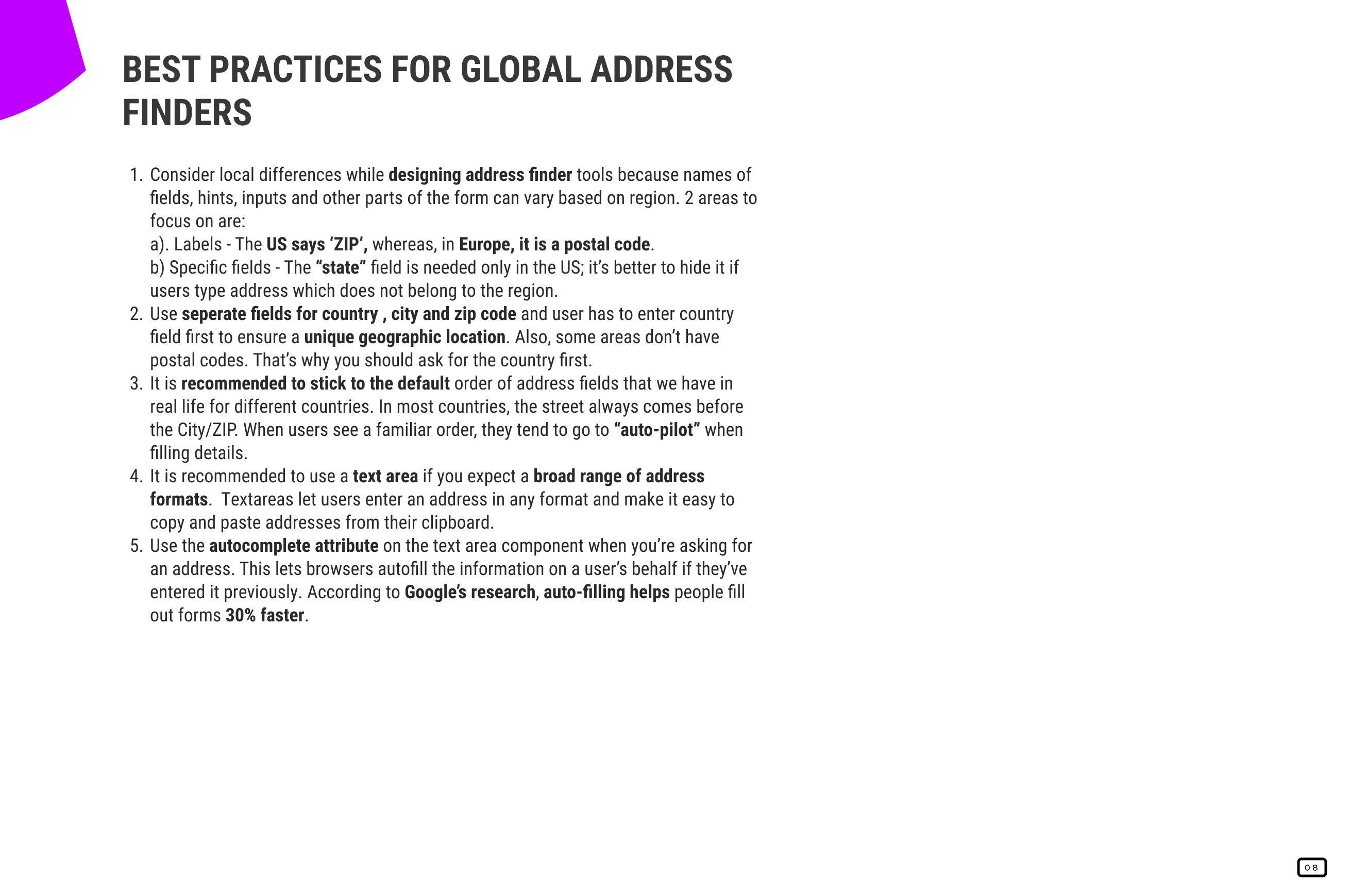
User tests were conducted across multiple regions, including Spain, Germany, Belgium, the UK, and Canada. I aimed to identify user difficulties in completing the address finder during registration.
Findings:
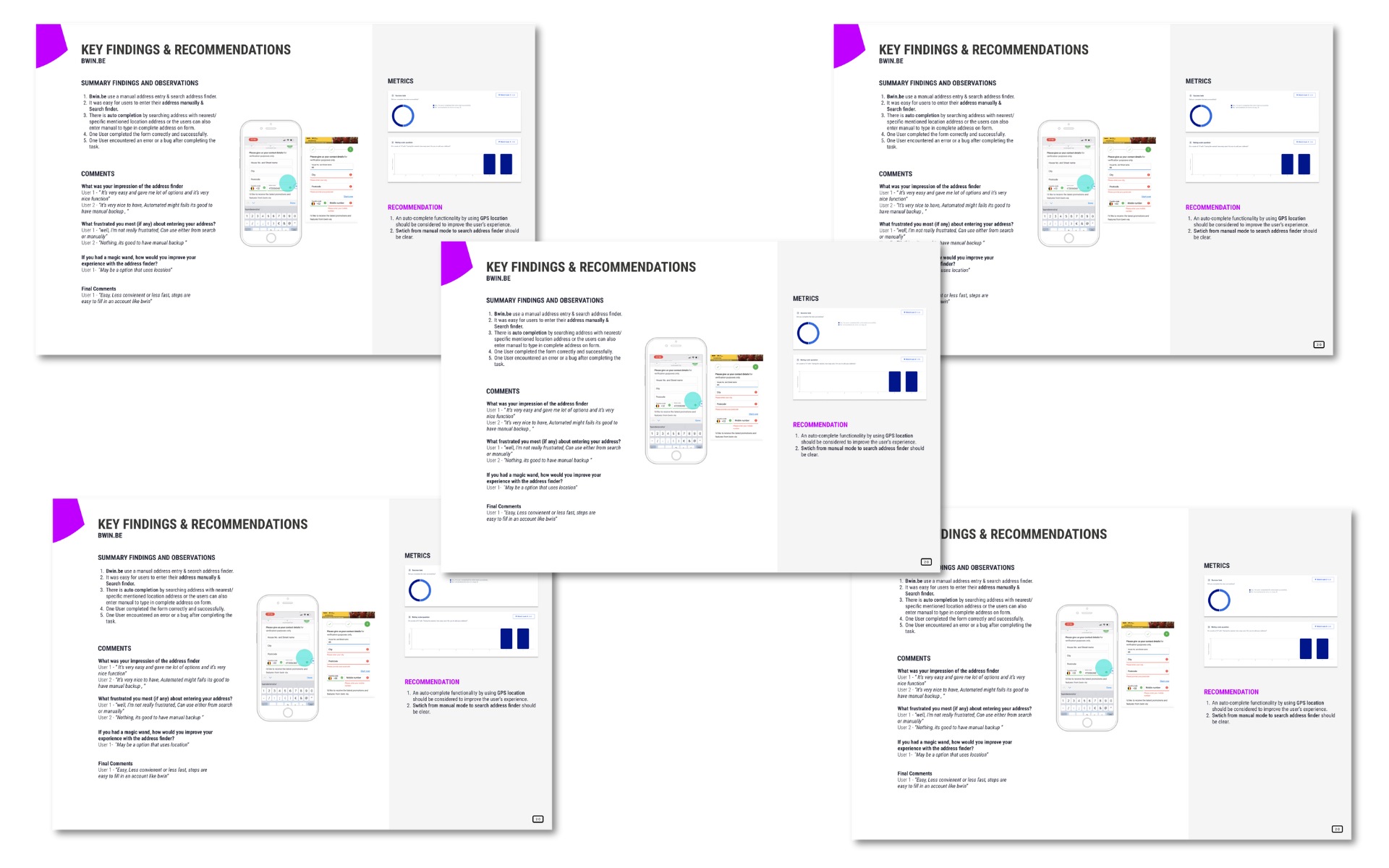
I created user journey maps to visualize the end-to-end experience for users registering on the platform. This process helped me identify key pain points and opportunities for improvement in the address finder tool.
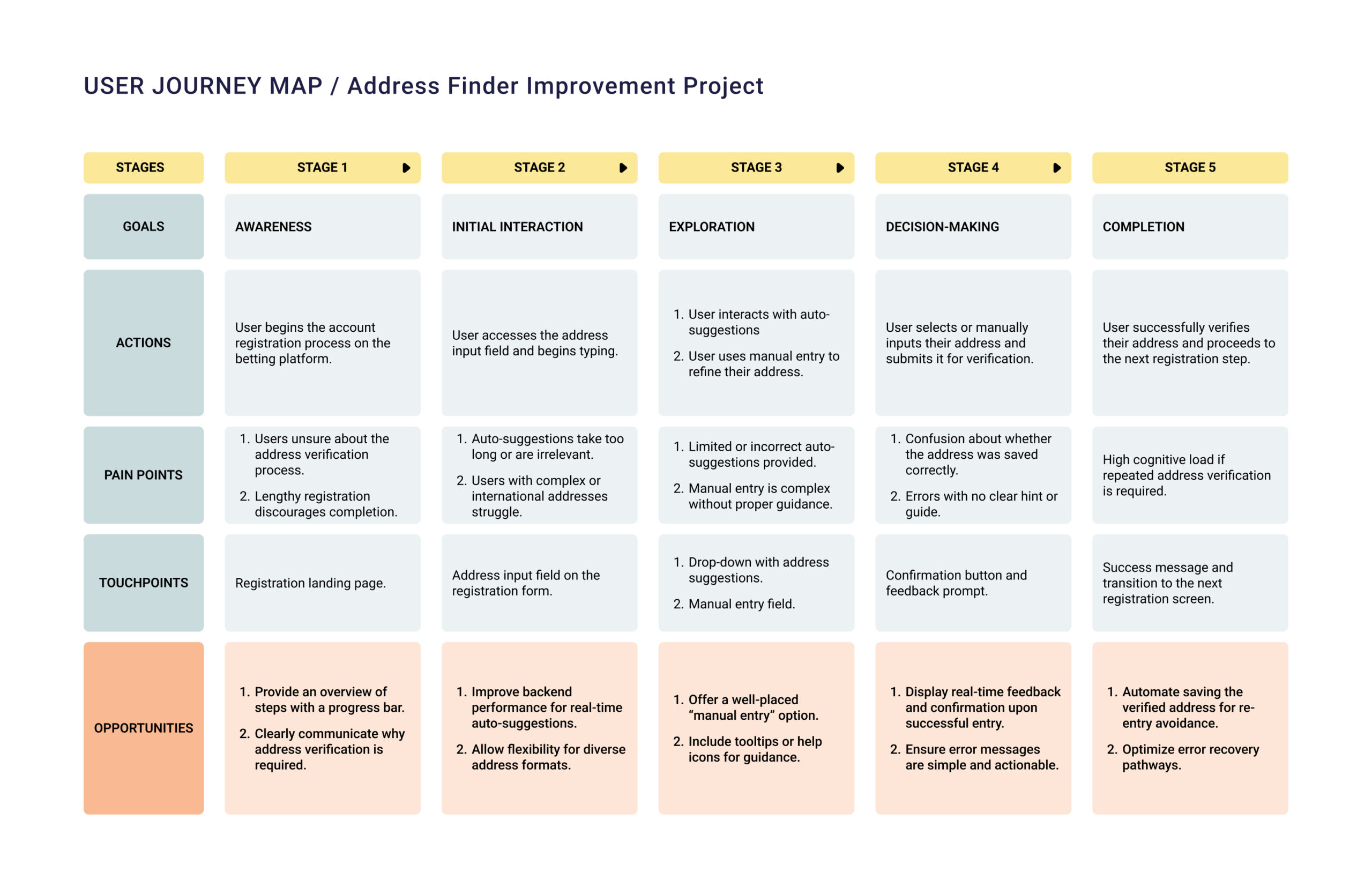
After completing my research, I organized a brainstorming session with the team, including project manager, designers, researchers and content designers, to identify key areas for improvement and generate possible solutions. During this process, we used affinity mapping to group and prioritize pain points into two categories:
We then used the card sorting method to prioritize the most critical problems to address first.
A. Common problems
B. Local Problems
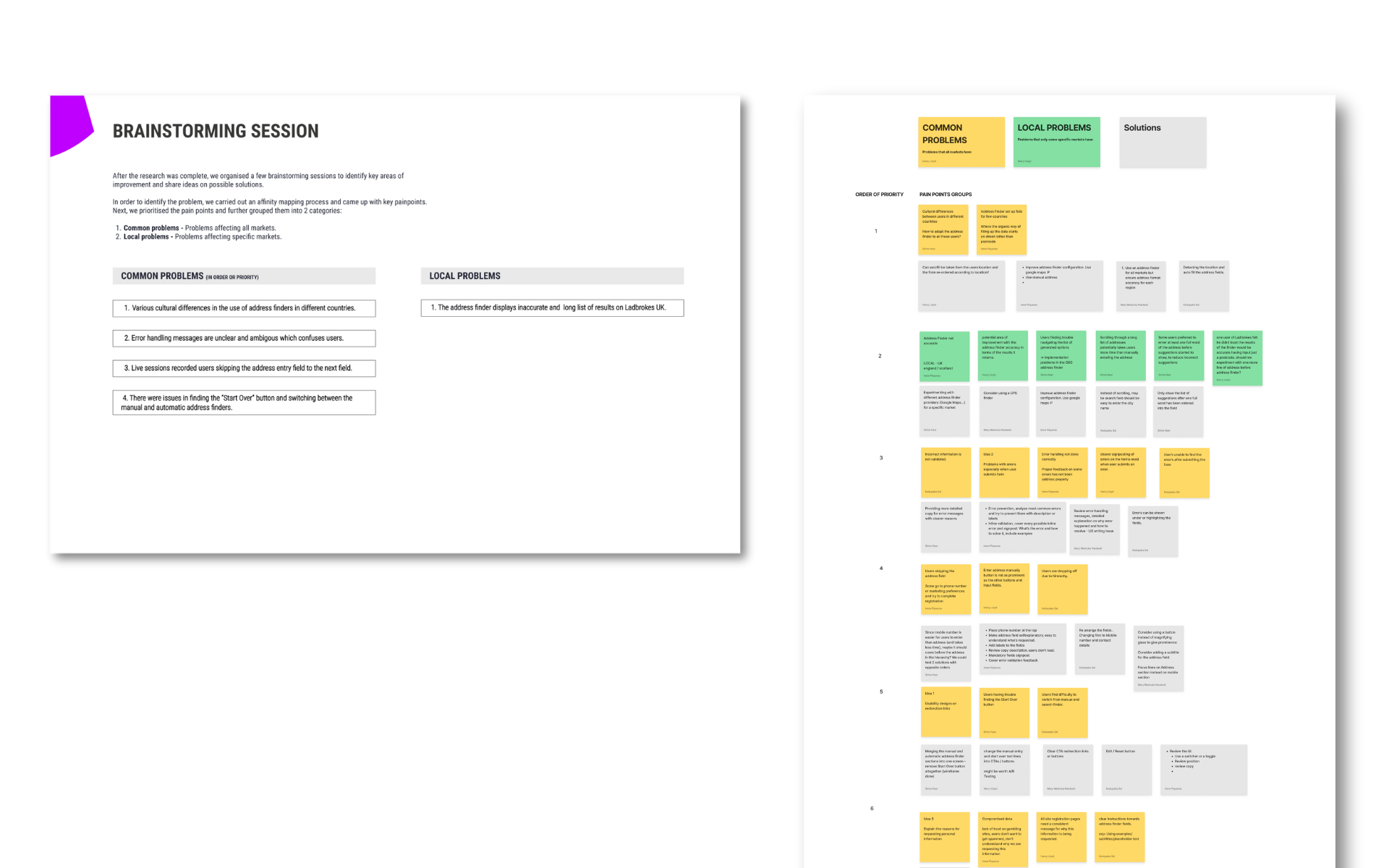
Once the pain points were prioritized, we moved into the brainstorming solution ideas, focusing on developing solutions for the top-priority problems.
Solutions for Common problems
Solutions for Local Problems
�
After ideation, I created low-fidelity wireframes to visualize the structure and layout of the proposed solutions.
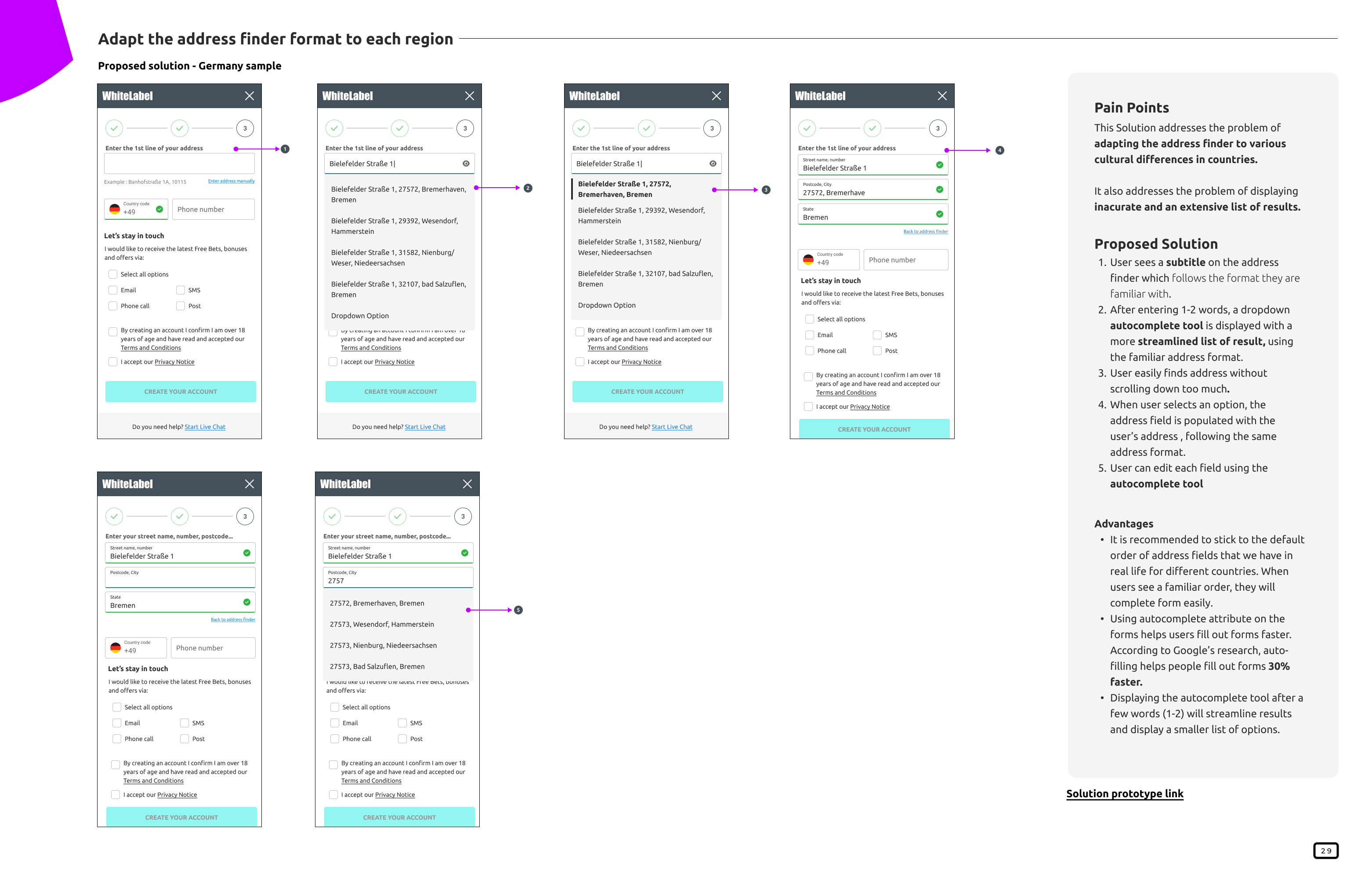
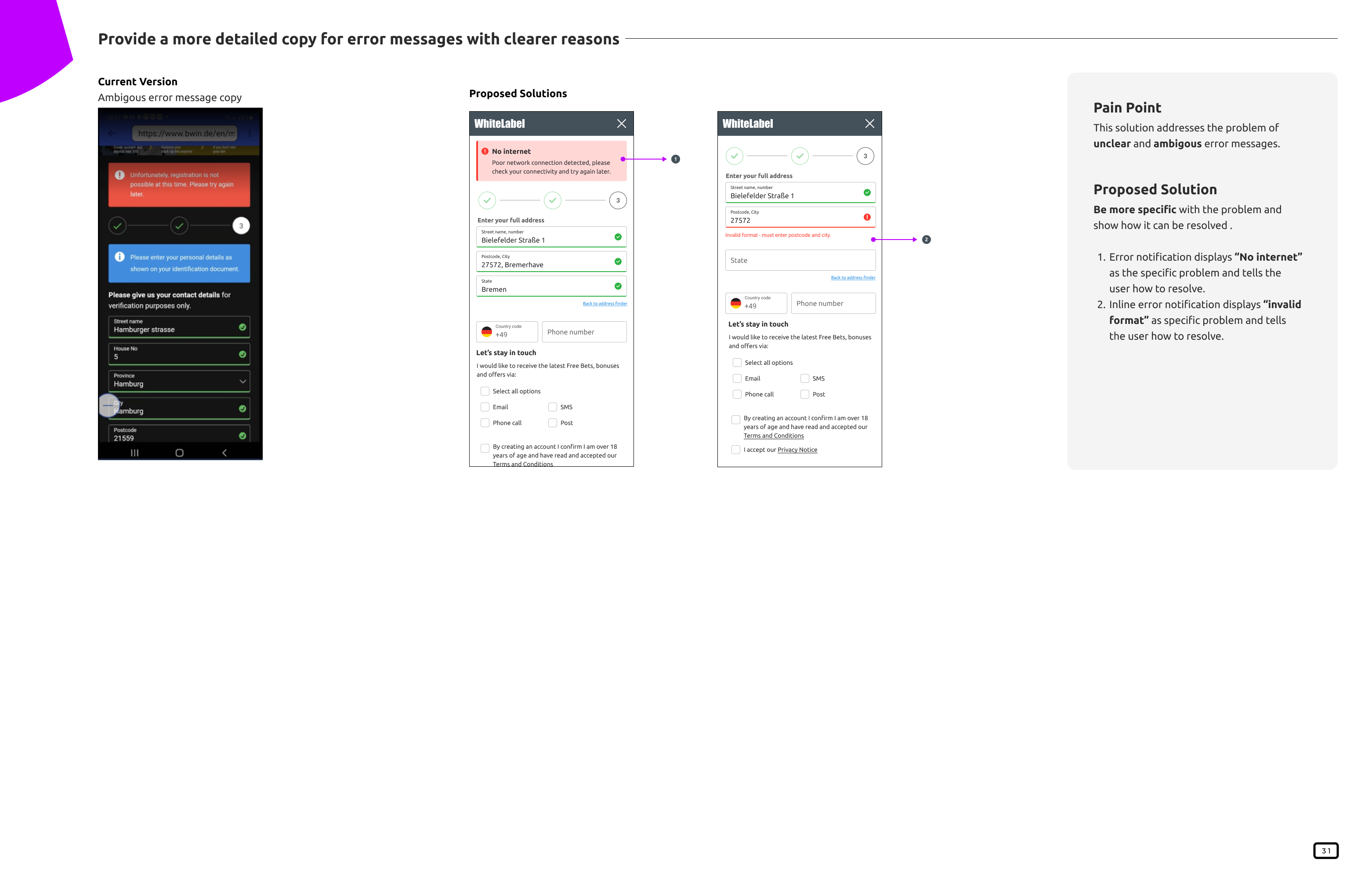
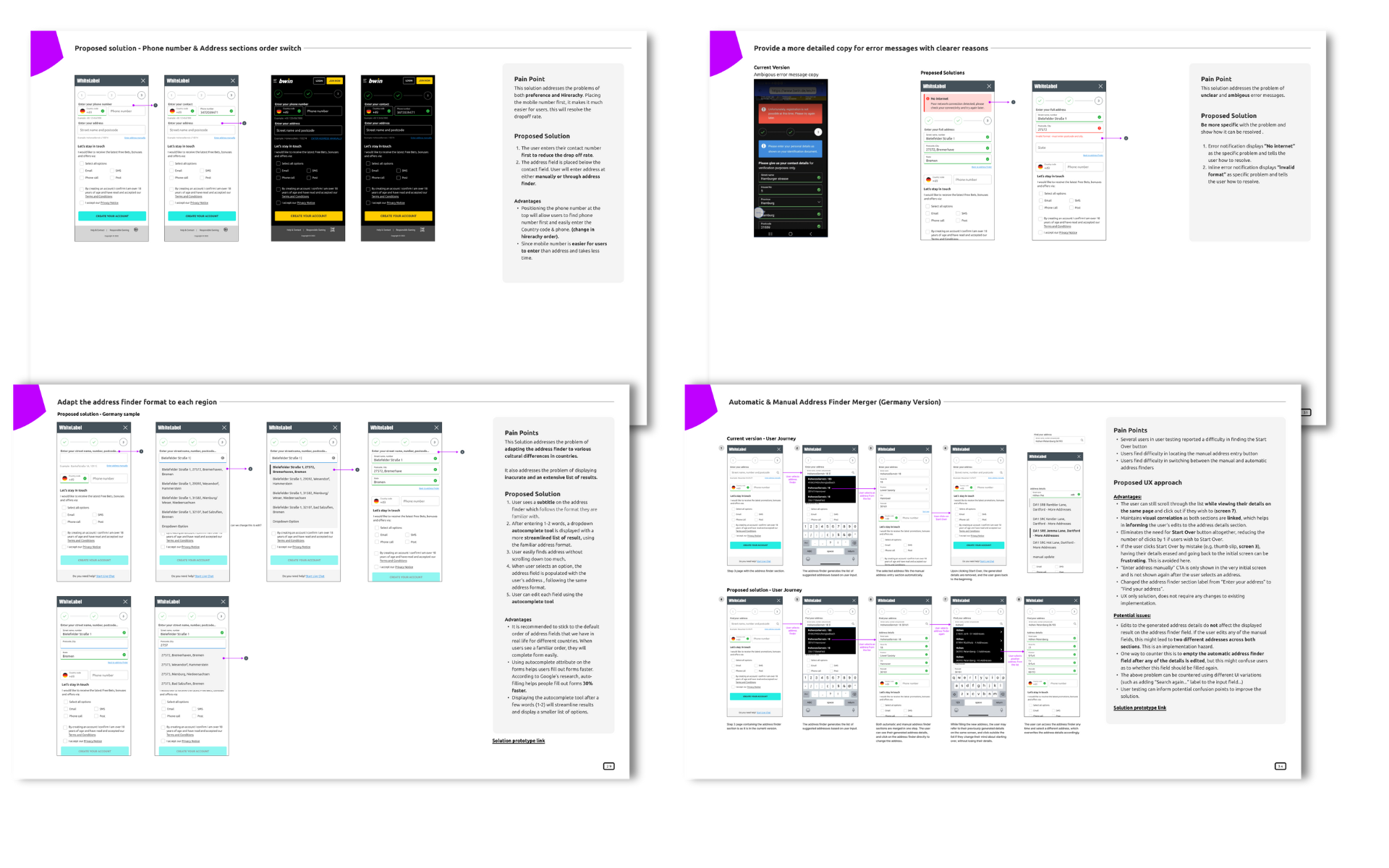
After reviewing feedback from the product manager on multiple design variations, I developed interactive prototypes to prepare for user testing.
These prototypes were tested with real users to gather insights and iterate on the designs, ensuring the final solution effectively addressed the key pain points identified.

After launch, project delivered the following measurable results:
During the development and implementation of the Address finder tool, several challenges emerged:
Cultural differences in address formats: Different countries have unique address structures, which made it hard to design a one size fits all solution.
Technical limitations: The backend systems had constraints, which made it difficult to implement advanced features like geolocation and auto-complete.
Balancing automation and manual entry: Users needed both automated address suggestions and manual input options, which had to be balanced in the design.
